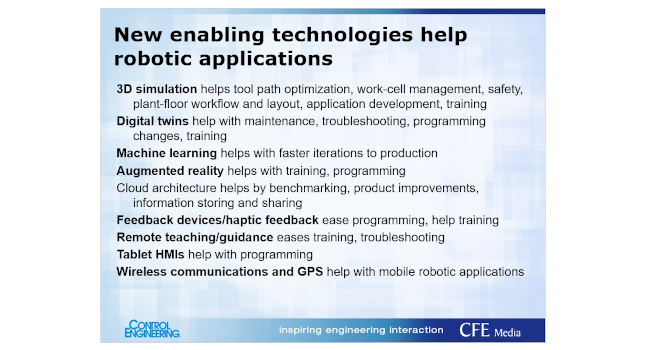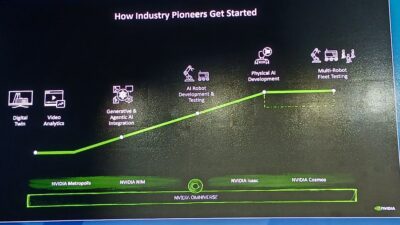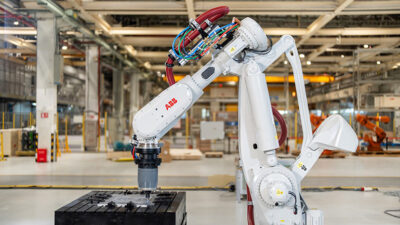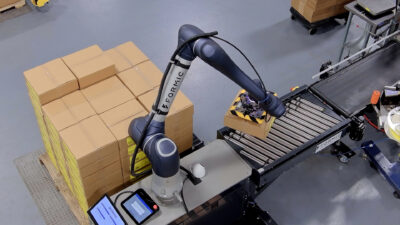Success of robotic applications requires putting the right robot with the right application. Learn more from system integrators from the webcast, “Robotic applications: What robots should and shouldn’t be doing,” including collaborative robots, motion, pitfalls, and more.

Robotic application information about collaborative robots, robotic motion, automation pitfalls, power quality, and safety follow. Information came from presenters in the March 12 webcast, archived for 1 year, is “Robotic applications: What robots should and shouldn’t be doing,” and covered:
- Related Control Engineering and Plant Engineering robotic research results and advice.
- New robotic applications and the enabling robotic advances.
- How to avoid the gee-whiz effect when deciding if new robotic capabilities are right for your applications.
- Tips and tricks about robot and robotic system applications.
Expert speakers for the webcast were Evan Gonnerman, controls engineer, and Ryan Wasmund, sales and marketing director, Concept Systems Inc., a system integrator with industrial robotic expertise. Also in the webcast, Control Engineering discussed survey results about robotic apps and conducted a poll of webcast participants to learn their reasons for the next robot purchase.
More robot-related answers
Additional answers from the speakers follow.
Question: How do you decide between a collaborative robot or traditional industrial robot?
Answer: The reasons for collaborative versus traditional industrial robots often is based around safety. If the automation tool will be used with humans on a regular basis a collaborative robot may be necessary. However, if the solution requires human intervention at certain points during the process a traditional robot can be used with safety rated laser scanners. Collaborative robots typically will have lower maximum speed profiles than traditional 5- to 6-axis robots.
Control Engineering: Risk assessments are needed even with collaborative robots or industrial robots using sensors, software, and other padding to run in collaborative applications. See more on safety, below. Other reasons for collaborative robot selection may include simplified programming, setup, integration, and resetting for other applications.
Q: Are there limitations in robotic movements? Are there challenges in addressing speed control with respect to robotic movements?
A: The biggest robotic movement to avoid is a “singularity” when discussing the most common 6-axis robotic implementations. There is a lot that goes into this but the 10,000-foot definition of a singularity is when the fourth and sixth axes of the robot are aligned. This situation can cause headaches especially when precise movements are necessary within this “zone” Besides singularities, it is important to understand the reach capabilities of the robot you are using as well as the payload capacity as these will define certain speed limitations.
Q: Are there any pitfalls to watch for as we gradually transition from manual to automated process?
A: Ensure that you have a solid maintenance and support team, or that you choose an integrator that can support you. The biggest issue that I have seen has been around companies putting in automation without the support structure in place to handle the robotic systems once they are in and running. This would include maintenance, programming support, and new product integration.
Q: Are you seeing power quality issues affecting robots?
A: Typically, no, power quality isn’t an issue unless there are major issues with the quality of the incoming power. In some cases, we can put in line reactors, and in some cases, more power quality and conditioning can be implemented.
Refer to the webcast for more
Other questions, answered verbally during the webcast, include:
- How are programmable logic controllers (PLCs) used in robotics applications?
- What are some Industrial Internet of Things (IIoT) security issues in robotics?
- How far off script can the robots go?
- How do you manage safety?
- How do you design a safety interlock for collaborative robot applications? What are safety requirements when one can not put interlocked cages around autonomous robots?
- What are some electrical safety issues related to robots?
Robotic and electrical safety
Wasmund suggested Control Engineering provide robotic safety information with these answers. See the following articles and organization links.
Robotic safety
Industrial robot safety requires industrial risk management
Industrial mobile robot safety standards on the forefront
Global robotics standards update
Electrical safety
Safety tips on SCCR for industrial control panels, industrial machinery
Employing PtD as the first line of defense against control panel electrical hazards
Also see:
Robotics Industries Association
Mark T. Hoske is content manager, Control Engineering, CFE Media, [email protected].
MORE ANSWERS
KEYWORDS: Industrial robot applications
Applications include robots operating in collaborative applications.
Robot movement is a consideration in industrial robot applications.
Webcast provides more tips and tricks related to robot and robotic system applications.
CONSIDER THIS
How are industrial robotic implementations helping your workflow?




